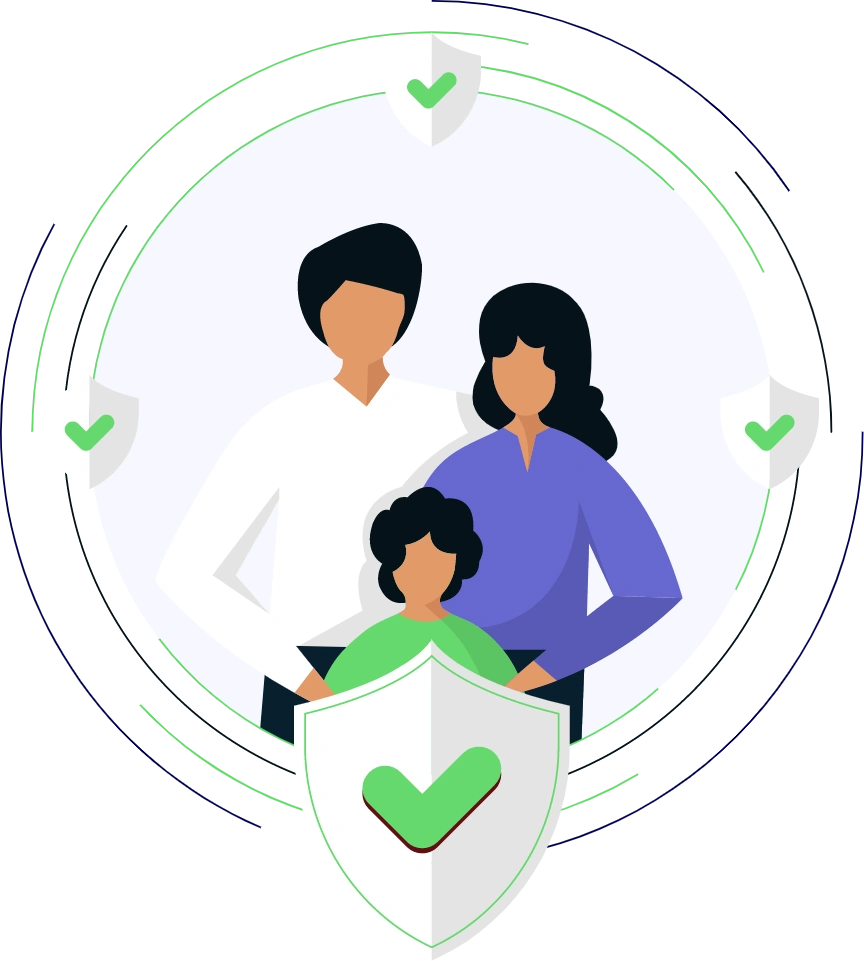Introduction to Reverse Mortgages
A reverse mortgage is a unique financial product designed for homeowners aged 62 or older that allows them to convert a portion of their home equity into cash without selling their home or taking on monthly mortgage payments. Unlike traditional mortgages, where borrowers make payments to lenders, reverse mortgages provide payments to the homeowner. The loan is repaid when the homeowner sells the property, moves out permanently, or passes away. Reverse mortgages can be an invaluable tool for retirees seeking to supplement their income, pay for healthcare expenses, or finance home improvements. However, they are typically best suited for those who intend to stay in their homes long-term.
Unlike a standard mortgage, which is typically structured as a long-term loan with fixed monthly payments, reverse mortgages offer flexible disbursement options such as lump sums, monthly payments, or a line of credit. The unique structure of this product provides retirees with financial freedom while ensuring they remain in their homes.
Financial Flexibility
Reverse mortgages offer unparalleled financial flexibility. Homeowners can use the funds for various needs, such as covering living expenses, paying off medical bills, or funding home improvements. For retirees with limited income, this option provides a safety net without requiring the sale of their home.
No Monthly Mortgage Payments
One of the most attractive features is the deferment of monthly mortgage payments. Homeowners are only required to pay property taxes, homeowners insurance, and maintenance costs. The loan balance, including interest, is paid back when the homeowner no longer resides in the home.
Non-Recourse Loan
A reverse mortgage is a non-recourse loan, meaning the homeowner or their heirs will never owe more than the home’s market value at the time of repayment. This ensures peace of mind for borrowers and their families, as repayment is capped even if the home’s value declines.
Additional benefits include:
Step-by-Step Application Process:
Required Documentation:
Contact us today to start your reverse mortgage application process!
GetInsure is rated 4 out of 5 stars based on 500 reviews!

Age Requirement
Borrowers must be 62 years or older. In the case of multiple borrowers, at least one must meet the age requirement.
Property Eligibility
The home must be the borrower’s primary residence and meet HUD’s standards. Eligible property types include:
Financial Criteria
Borrowers must demonstrate the ability to meet ongoing obligations, including property taxes, homeowners insurance, and home maintenance costs.
Other Requirements:
Impact on Heirs
Reverse mortgages may reduce the inheritance left to heirs since the loan balance must be repaid from the home’s value upon the homeowner’s death or relocation. Heirs can repay the loan or sell the home to satisfy the debt.
Accumulation of Interest
Interest accrues over time and is added to the loan balance. This means the longer the loan is active, the more it will cost, potentially reducing the homeowner’s remaining equity.
Loan Terms Compliance
Borrowers must meet specific terms, including staying in the home as their primary residence, paying property taxes, maintaining homeowners insurance, and keeping the home in good condition. Failure to comply may result in loan default.
Additional Considerations:
Reverse mortgages can provide significant financial benefits, but it’s essential to understand the associated risks. Consulting a financial advisor is recommended to ensure it’s the right choice for your financial goals and lifestyle.
Reverse mortgages are unique financial products that allow homeowners, typically seniors, to access their home’s equity without having to sell or move out of the property. Instead of making monthly mortgage payments, the homeowner receives payments from the lender, either in a lump sum, through a line of credit, or in monthly installments. The loan is repaid when the homeowner moves out of the home, sells it, or passes away. However, it is important to note that there are different types of reverse mortgages available, each designed for specific situations. Below are the primary types of reverse mortgages:
The most common and widely recognized type of reverse mortgage is the Home Equity Conversion Mortgage (HECM). This government-backed loan is insured by the Federal Housing Administration (FHA) and is available through approved lenders. HECMs are designed specifically for seniors aged 62 or older who have substantial equity in their home.
Key Features:
HECMs are the most common type of reverse mortgage and are typically the preferred choice for many seniors because of the backing by the FHA and the additional consumer protections it provides.
Proprietary reverse mortgages are private loans that are not insured by the FHA. These loans are offered by private lenders and are typically suited for homeowners with higher-value homes. Since these loans are not subject to the limits imposed by the FHA, they may allow borrowers to access a larger amount of their home’s equity, especially in cases where the home is valued above the FHA lending limits for HECMs.
Key Features:
Proprietary reverse mortgages can be an attractive option for homeowners with high-value properties who want to tap into more of their home equity than what is available through the HECM program. However, they come with the drawback of higher costs and fees, which can make them less appealing to some borrowers.
Single-purpose reverse mortgages are typically offered by state or local government agencies and nonprofit organizations. These loans are used for specific purposes, such as paying for home repairs or property taxes. They are often the least expensive type of reverse mortgage, but the borrowing restrictions limit their flexibility.
Key Features:
Single-purpose reverse mortgages are typically the least expensive and simplest form of reverse mortgage, but their limitations in terms of use and loan size make them less flexible than other options.
This is a specialized variation of the Home Equity Conversion Mortgage (HECM) program, designed for seniors who want to purchase a new primary residence using the proceeds from their reverse mortgage. A Reverse Mortgage for Purchase (HECM for Purchase, or HECM for Purchase) allows homeowners to use their home equity to purchase a new home, typically with no monthly mortgage payments.
Key Features:
HECM for Purchase offers an excellent opportunity for seniors to downsize or relocate to a new home while utilizing the equity they’ve built in their current property.
Conclusion
There are several types of reverse mortgages, each offering different features, eligibility requirements, and benefits. The most commonly used reverse mortgage is the Home Equity Conversion Mortgage (HECM), which is government-backed and offers several options for how the funds can be received. Proprietary reverse mortgages cater to those with higher-value homes, offering larger loans. Single-purpose reverse mortgages are the least expensive but most restrictive, and the HECM for Purchase option allows seniors to purchase a new home using a reverse mortgage. Understanding these different types of reverse mortgages is crucial for seniors seeking to make the best financial decision for their unique circumstances.
GetInsure is rated 4 out of 5 stars based on 500 reviews!

Discover Top Articles & Resources Tailored for Your Needs

The choice of the Personal loan lender is significant to make because such a choice will either make or ruin

Personal loans exist in today's American financial landscape in a way by which most get to manage their expenses, get

Looking ahead in the future, purchasing life insurance is a good investment that will grant you peace of mind and

Auto insurance is a necessary expense for anyone who owns or drives a car. It's important to have the right

Auto insurance is one of those necessary expenses that we all have to deal with. We need it to protect
GetInsure is rated 4 out of 5 stars based on 500 reviews!

To qualify for a reverse mortgage, you must be at least 62 years old, live in the home as your primary residence, and have sufficient equity in your property. You must also be able to maintain the home, pay property taxes, and keep up with homeowners insurance.
In a reverse mortgage, the lender provides the borrower with payments based on the equity in their home. The homeowner does not make monthly payments. The loan is repaid when the homeowner sells the home, moves out, or passes away. The repayment amount is typically the home’s value or the loan balance, whichever is lower.
The costs can include origination fees, closing costs, mortgage insurance premiums (for HECMs), and servicing fees. These costs are typically added to the loan balance and paid when the loan is repaid.
The amount you can borrow depends on factors like your age, the value of your home, and the interest rate. Generally, the older you are and the more equity you have in the home, the more you can borrow. A reverse mortgage calculator can help estimate the loan amount you might qualify for.
Yes, a reverse mortgage can be used to purchase a new home through a program called HECM for Purchase (HECM for Purchase). This allows seniors to downsize or relocate while using the proceeds from the reverse mortgage to finance the new property.

© Getinsure. All Rights Reserved.
Terms of Use
Privacy Policy
Cookie Preferences
Unsubscribe
Cookie Preferences
Do not sell my information / CCPA

© Getinsure. All Rights Reserved.